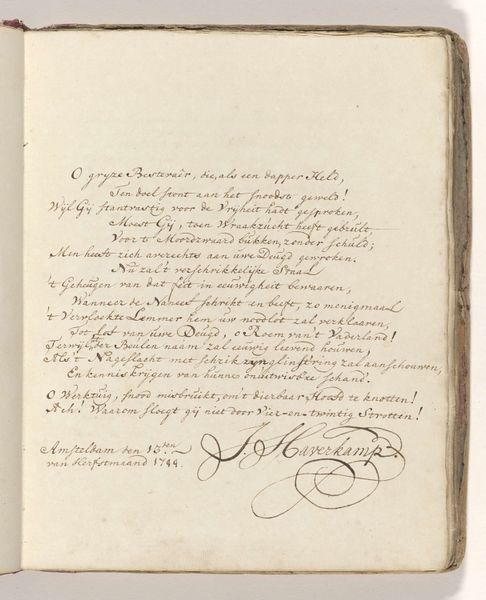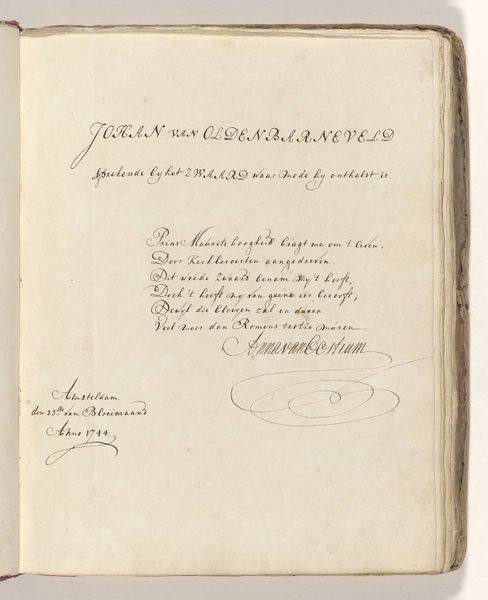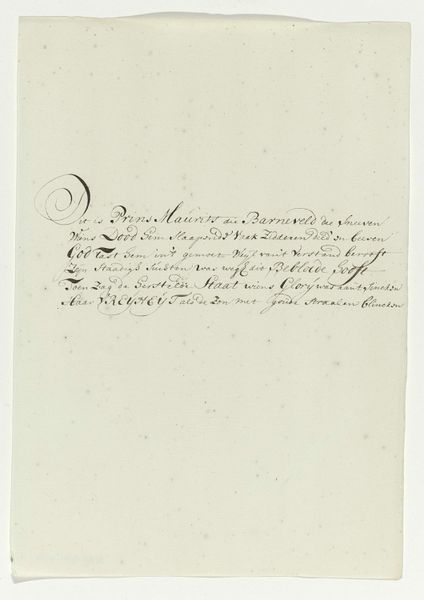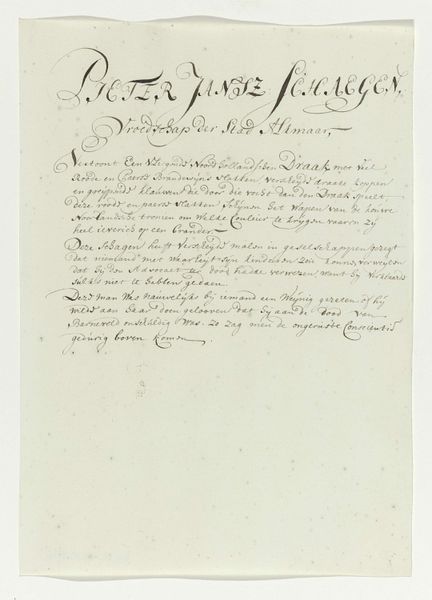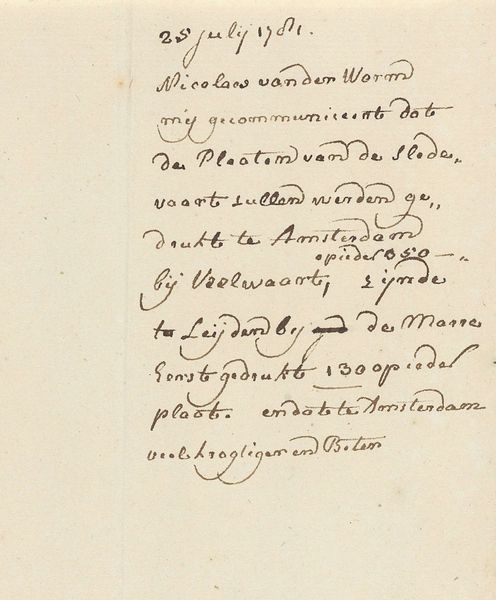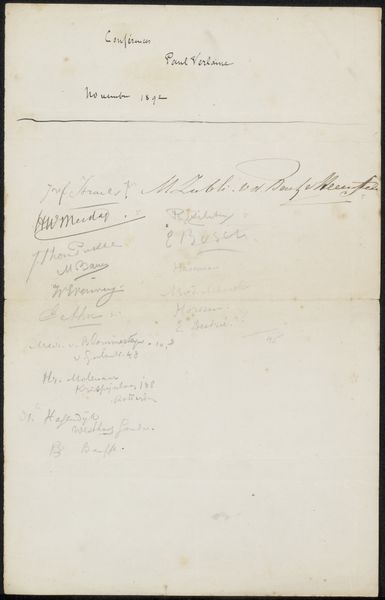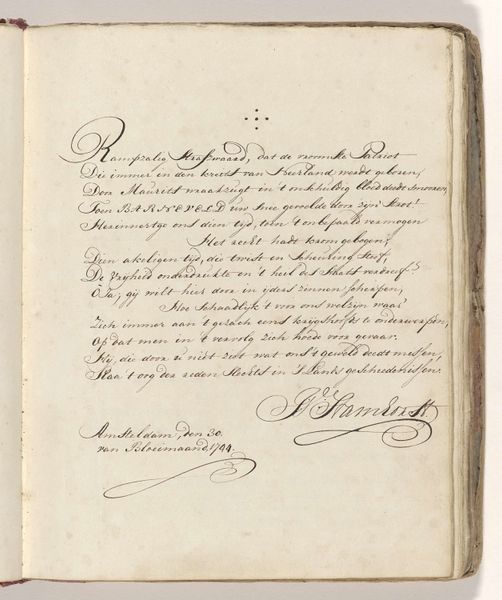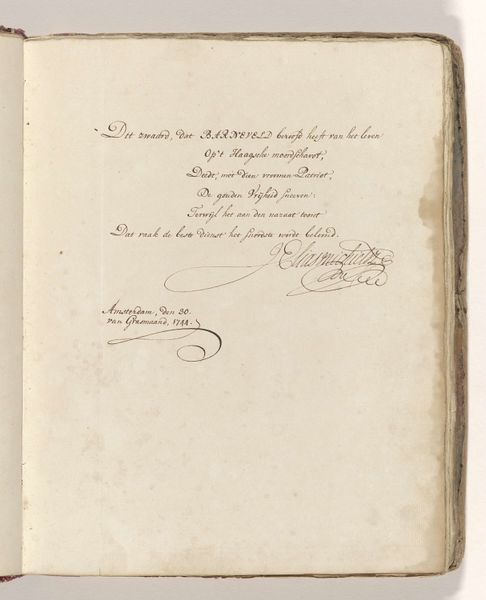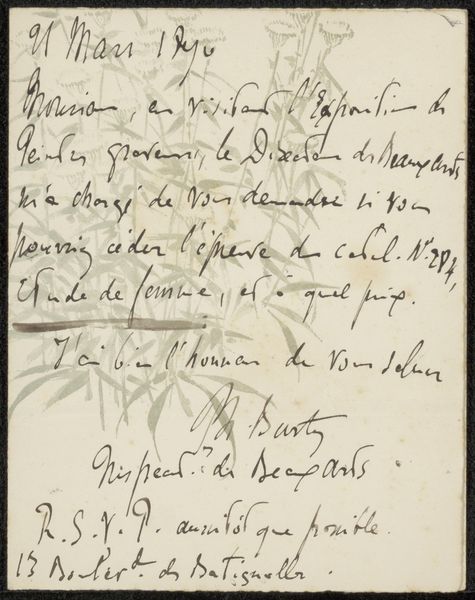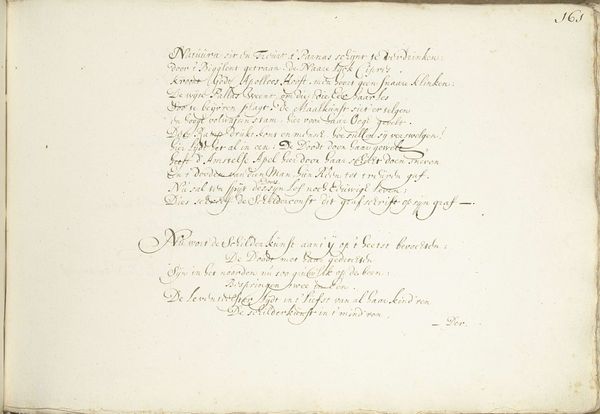
Lijst met personages uit het toneelstuk Gooden Pleijdt ofte Triomphe der Schilderconst over de Doodt 1660
0:00
0:00
drawing, paper, ink
#
portrait
#
drawing
#
baroque
#
paper
#
ink
#
calligraphy
Dimensions: height 243 mm, width 360 mm
Copyright: Rijks Museum: Open Domain
Curator: Looking at "Lijst met personages uit het toneelstuk Gooden Pleijdt ofte Triomphe der Schilderconst over de Doodt" by Henrik Jordis, created around 1660, it appears to be a character list. Its graceful lettering hints at the importance of theater in Baroque society. What's your initial response to this piece? Editor: At first glance, the delicate quality of the ink on paper gives it an almost ethereal feel. The act of handwriting and its visibility bring me closer to the physical nature of creating art, not to mention theater itself. It makes me think about labor, and the artisan skills employed to produce this piece. Curator: I agree. Considering the period, theatre and visual arts were intricately connected, both reflecting and shaping social narratives. Looking closer, we see Apollo, Pallas, Mercury, and Death as personified characters. Their inclusion underscores the period’s deep reliance on classical mythology to interpret existential concerns. I see the artist even refers to the figure of "Nature" or perhaps "Native". This list could offer deep insight into period acting or drama, its use and understanding of mythology, class and death! Editor: I think you’re right, and in line with that thought, focusing on its materiality, the type of ink and the quality of paper tell a story too. Who could afford it? What sort of life do materials like this represent? The act of manually creating the lettering—think about the embodied labor of the scribe at the time—before theatrical labor. What class positions did those laborers possess in the time period? Curator: Absolutely. And consider that it is housed in the Rijksmuseum, an institution dedicated to Dutch cultural history. That alone situates it within a narrative of national identity. This work not only transcends the distinction of ‘high art,’ but opens conversations about status, labour, even identity! Editor: Well, thinking about our labor now, I've come to appreciate its simplicity but also the layered information it unveils about 17th-century craftsmanship, performance and even labor. Curator: And I value the dialogue it invites between art, history, theater and larger questions of identity and purpose. A small artwork which sparks a rather wide debate.
Comments
No comments
Be the first to comment and join the conversation on the ultimate creative platform.



